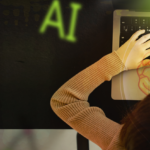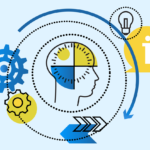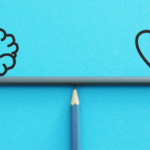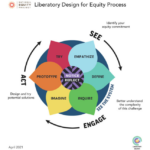Welcome to the LEARN Network Blog! On this page you will find brief posts highlighting Network insights and resources from researchers, developers, practitioners, and entrepreneurs on the scaling of evidence-based educational products.
If you are doing work on scaling or creating evidence-based products and would like to be featured on the blog, please fill out the brief form on our Contact Us page.

Scaling Evidence-Based Solutions for Learning Recovery
Since the pandemic, the urgency of designing and scaling evidence-based products to support learning recovery has become more pronounced. Educational ...

Strategies for Successful Scaling in Districts: Breaking the Cycle of the ‘Next New Thing’
When a new intervention or program is introduced, the conventional wisdom among many seasoned educators is, “This too shall pass.” ...

Blog Series: Scaling Evidence-Based Edtech in Postsecondary Education
The shift to online learning due to COVID-19 appears here to stay – with a lasting increase in the share ...

Leveraging Technology to Support Students with Disabilities: A Conversation with Adrienne Woods
In the latest episode of The SRI Homeroom podcast, SRI Senior Education Researcher Adrienne Woods joins host Kori Hamilton Biagas ...

The Latest Takes on Generative AI in Education
Generative AI is taking center stage at many education conferences this year. Educators, administrators, developers, investors, policymakers, and researchers across ...

Designing and Scaling for Educational Impact in Rural Communities: Five Takeaways for Researchers and Developers
The LEARN network recently hosted a panel discussion with scholars and practitioners who understand the unique considerations required to design, ...

Supporting Struggling Adolescent Readers: A Conversation with the STARI Team
In the latest edition of the SRI Homeroom podcast, host Kori Hamilton Biagas sat down with Margaret Troyer and Kala ...

When Students Have a Say in Educational Innovation: A Conversation with Ela Joshi
The LEARN Network’s Ela Joshi sat down with host of The SRI Homeroom podcast Kori Hamilton Biagas to break down ...

How to Scale Evidence-Based Approaches: Four Insights from Rob Horner
In the late 1980s, Rob Horner and George Sugai developed Positive Behavior Interventions and Supports (PBIS), an evidence-based framework to ...

Supplemental Reading Programs in Action: Five Lessons from the LEARN Network Product Teams
In early February, the LEARN network partnered with the Campaign for Grade-Level Reading (CGLR) to host a conversation with leaders ...
Scaling for System-Level Change: A Conversation with Suzanne Donovan and Vanessa Coleman
Suzanne Donovan, executive director of the Strategic Education Research Partnership (SERP) Institute, and Vanessa Coleman, co-director of SRI’s Center for ...

Matching Promising Theories with the Daily Realities of Users: A Conversation with LEARN Network Lead Rebecca Griffiths
LEARN Network lead Rebecca Griffiths recently had a conversation with the SRI Homeroom podcast host Kori Hamilton Biagas. They discussed ...

Engaging Both Hearts and Minds in Design, Development, and Evaluation: A Conversation with Vanessa Coleman
LEARN Network advisor Vanessa Coleman chatted with host of The SRI Homeroom podcast Kori Hamilton Biagas to discuss her vision ...
Scaling A2i: A Conversation with Jay Connor and Sarah Siegal (Part 1)
Jay Connor, CEO of Learning Ovations, and Sarah Siegal, director of research and practice at Scholastic and former vice president ...
Scaling A2i: A Conversation with Jay Connor and Sarah Siegal (Part 2)
This blog post is part 2 of a three-part series highlighting key takeaways from a conversation with Jay Connor, CEO ...
Scaling A2i: A Conversation with Jay Connor and Sarah Siegal (Part 3)
This blog post is part 3 in a three-part series highlighting key takeaways from a conversation with Jay Connor, CEO ...

Scaling the Science of Reading with the TRI-Reading App: A conversation with Mary Bratsch-Hines and Heather Aiken
Mary Bratsch-Hines and Heather Aiken, leaders of the evidence-based product Targeted Reading Instruction (TRI), recently sat down with host of ...

Taking the First Step: Strategies for Effective Knowledge Mobilization
Blog 2 in a two-part series on knowledge mobilization. In this second blog post, I’ll focus on how you can ...

Mobilizing Knowledge Along the Path from Research to Practice
Blog 1 in a two-part series on knowledge mobilization. One of the truths I’ve learned over my time as an ...

Experts Share Scaling Strategies at the ED Games Expo
The annual ED Games Expo, part of the Institute of Education Sciences’ (IES’) Small Business Innovation Research (SBIR) program, creates ...

ED/IES SBIR: Advancing Research to Practice at Scale in Education
The Department of Education and Institute of Education Sciences Small Business Innovation Research Program (known as ED/IES SBIR), funds projects ...

Scaling Educational Products in Rural Communities: A Conversation with Allen Pratt
According to the National Center for Education Statistics, approximately one in five public school students are enrolled in a school ...

Who’s Who in District Procurement of Educational Products
School districts are typically the entryway for educational products to make it into the hands of students and teachers. However, ...

Lessons for Equitably Scaling Deeper Learning
Thinking critically, working collaboratively, communicating effectively, learning how to learn—these are the types of deeper learning competencies that students will ...

Strategies for Bridging the Research-Practice Gap in Education
One of the central goals of the LEARN Network is to help educational products that already have a strong evidence ...

When a Theory of Change Fails to Meet a Problem of Practice
When researchers seek to create a product, program, or intervention to enhance educational outcomes for students, they often start from ...

What does it mean to “scale” an educational product?
“Scaling” a product in business typically means moving from a small number of “early adopters” to a larger number of ...

Using the Invent-Apply-Transition Framework to Design Educational Innovations for Scale
Wide use of evidence-based educational innovations has the potential to accelerate learning and enhance outcomes for all learners. However, even ...

Designing and Scaling Equity-Focused Educational Products
When designing and scaling evidence-based educational products, it is critical to ensure they are relevant and accessible to the communities ...

New IES network seeks to scale solutions to learning loss
The Leveraging Evidence to Accelerate Recovery Nationwide (LEARN) network, a new three-year grant funded by the Institute of Education Sciences ...
